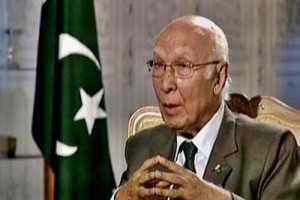The eight-long year battle has finally come to an end for Santosh Devi, the widow of a Territorial Army personnel, who was granted an ex-gratia amount of Rs10 lakh by the Supreme Court, in a recent order. Army had denied the family pension on the ground that her husband, who died of heart attack, had not completed requisite15 years in service.
Directing the central government to pay the amount to Santosh Devi, whose husband died in 2008 at his native village in Punjab, the apex court set aside the Armed Force Tribunal’s order rejecting her plea.
The Armed Forces Tribunal had dismissed the application filed by the widow seeking family pension for the death of her husband claiming that Singh had rendered a total service of about twelve years in the army.
Tribunal had held that he did not have the requisite minimum qualifying embodied service of 15 years to earn service pension, and hence upon his death while he was in disembodied state, the widow was not entitled to family pension.
It was contended before the bench headed by Chief Justice of India T S Thakur that while the wife of a regular army soldier, who dies in harness is entitled to family pension even if the deceased soldier had not put in the minimum qualifying service to earn service pension, the same is denied to wife of a deceased Territorial Army soldier on a specious plea that the deceased soldier was in disembodied state when the death took place.
According to Devi’s petition, this discrimination is violation of Article 14 of the Constitution of India.
The division bench also comprising Justice R Banumathi agreed with the reasoning of the tribunal that a regular army person and a person enrolled in the Territorial Army are governed by different set of terms and conditions of service.
Observing that there are anomalies in the rules governing service conditions of Territorial Army men, the court observed, “inspite of repeated recommendations, it is not known why steps are not being taken to remove the anomalies to pay family pension to ‘next of kin’ of Territorial Army personnel who rendered long service in Territorial Army and died while in disembodied state.
We hope that the Union of India considers the issue favourably to remove the anomalies to pay appropriate family pension to next of kin of Territorial Army personnel who die while in disembodied state by giving due weightage to their embodied service.”
As per Army Order 77 of 1984, the Territorial Army is a part of the regular Indian Army. The role of Territorial Army is to relieve the regular army from static duties, assist civil administration in dealing with natural calamities and maintenance of essential services in situations where life of the communities is affected or the security of the country is threatened, and to provide units for the regular army as and when required.
Territorial army is part of regular Indian Army
As per Army Order 77 of 1984, the Territorial Army is a part of the regular Indian Army.
The role of Territorial Army is to relieve the regular army from static duties, assist civil administration in dealing with natural calamities and maintenance of essential services in situations where life of the communities is affected or the security of the country is threatened, and to provide units for the regular army as and when required.
 Every full-term prime minister since 1984 has addressed a joint meeting of the House and Senate.
Every full-term prime minister since 1984 has addressed a joint meeting of the House and Senate.















































































































